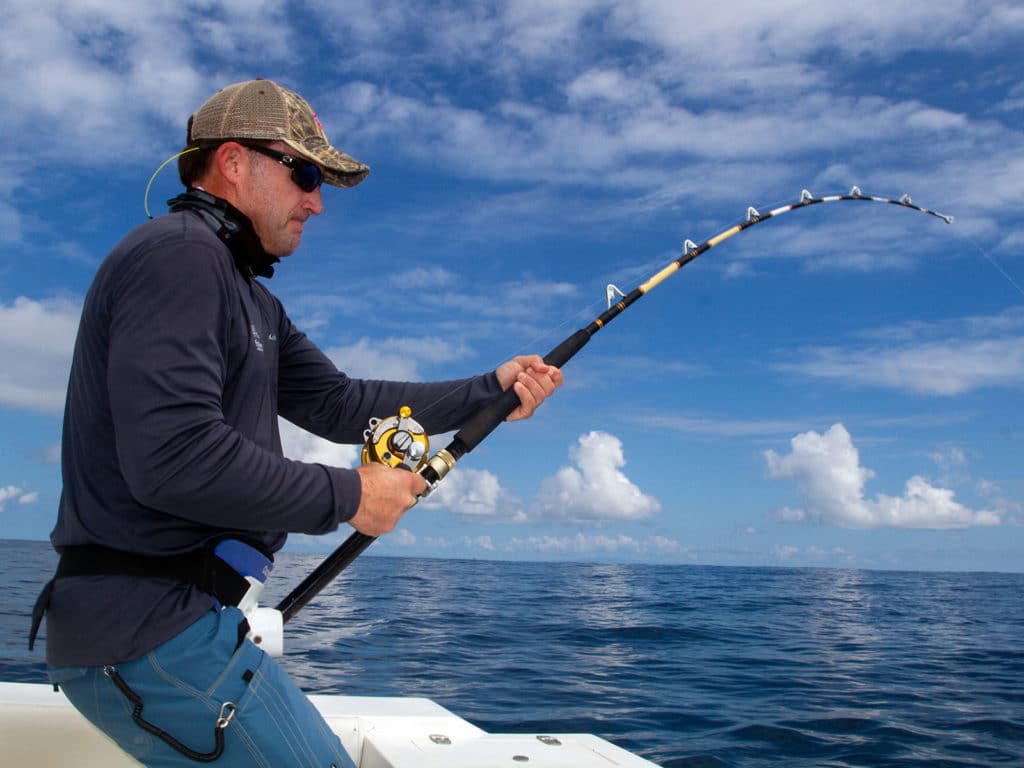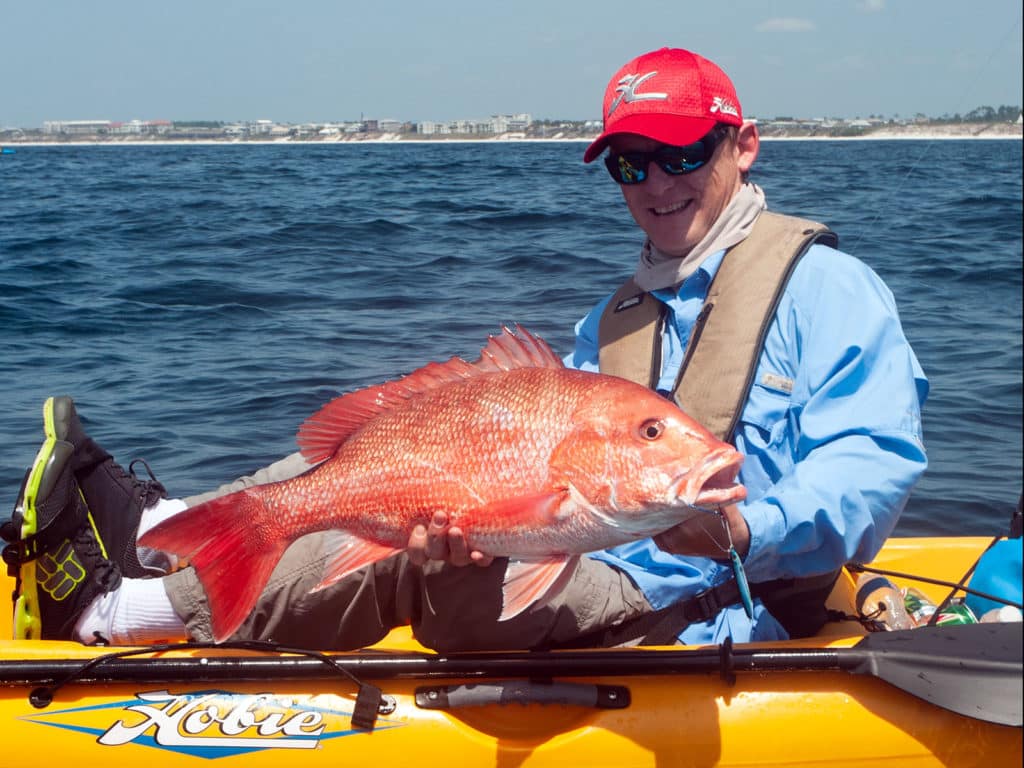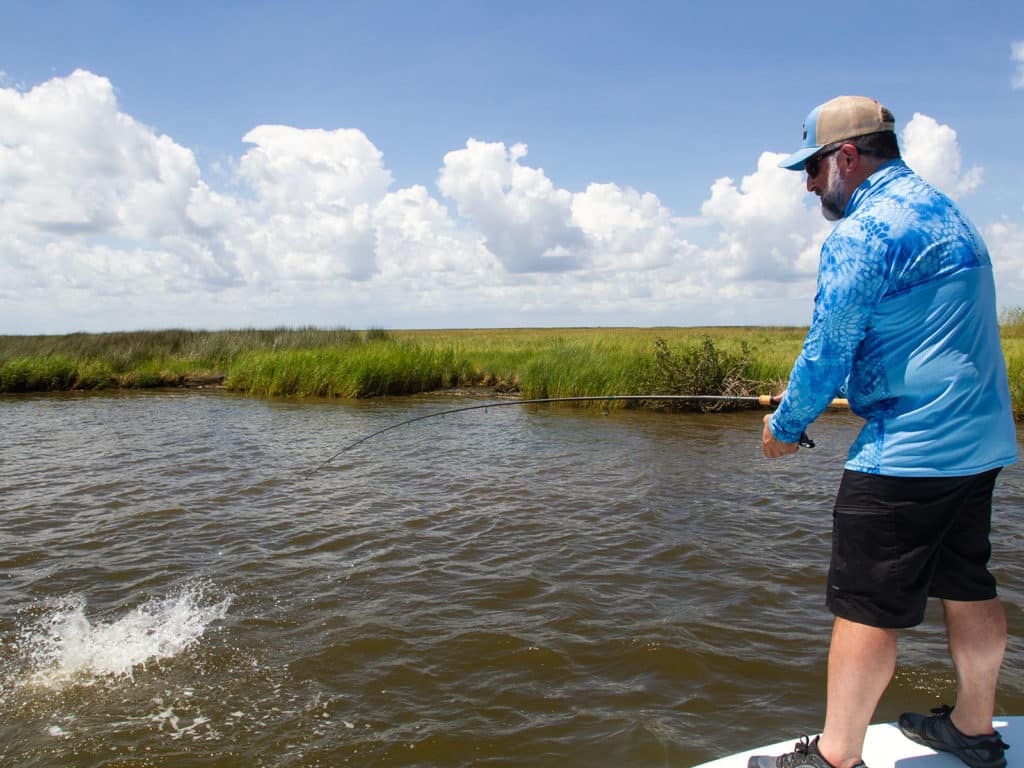
If Goldilocks was an angler, she would have a really hard time setting drag pressure on a fishing reel. This setting is too strong, this setting is too weak. If Goldilocks could only find a drag setting that is just right.
I am Goldilocks when it comes to adjusting the tension on my reel spool, I can’t get it right. Last fall, I pulled the hook on several bull red drum trying to horse them out of the pilings of the Chesapeake Bay Bridge Tunnel. Then, I turn around and lose the biggest seatrout of my life because I’m using light drag for the fang-tooth, paper-mouth fish. I can’t stand the pressure!
For guidance, I went to my friend Captain Jot Owens, an inshore guide in Wrightsville Beach, North Carolina. Owens targets light-biting speckled trout and hard-charging redfish with significantly different drag pressure. He explains, “If I’m fishing for redfish, I’m using 4 to 5 pounds; speckled trout I use 1 to 2 pounds.”
When to Set Your Fishing Reel Drag Heavy

On the other end of the scale, Owens targets gag grouper and other bottom bruisers on the ocean reefs with heavy drag. “The latest compact reels have incredible drag systems to work a fish out of the structure.” Large washers, advanced materials and sturdy construction allow an angler to push the drag to the limits without sacrificing performance.
Owens says he falls in the middle of the road on drag pressure. “I don’t like too much or too little,” he says. The danger of over tightening the drag is pulling the hook. Too light, and the hooks fall out of the fish’s mouth.
According to Owens, the answer isn’t too much drag or too little drag. Instead, he looks for a quality, reliable drag system that stays smooth at any setting. But on that topic, have you ever tried fighting a fish with standup tackle at 55 to 60 pounds of drag pressure? It is not an easy thing to do. On land, max out your drag settings and then try lifting a 50-pound weight with a capable tackle setup. How did you handle it?
How Fishing Reel Drag Systems Work
When a fish runs, it pulls line off the reel spool. To allow the reel spool to turn backward, metal and felt or carbon fiber washers slide like clutch plates. Increasing the drag setting tightens the washers, requiring more pressure to make them spin.
Tightening the drag washers also creates more heat. Heat causes things to expand. The primary job of the drag materials and construction is dissipating the heat so the drag washers maintain the same pressure throughout the fight. Owens explains, “A better reel will have a better drag that turns smoothly longer.”
A quality drag system is protected from salt, sand and moisture by a sealed body and corrosion-resistant components. Not only do contaminants cause the materials to break down, they will coat the drag parts and reduce friction.
Recently, designers are packing higher drag pressure in smaller reels. “They have huge washers and produce 20 pounds of drag in a 2500 reel,” Owens marvels. While he doesn’t plan to put maximum resistance on a redfish or employ the tiny reel against a yellowfin tuna, Owens says reels with higher drag capacity are smoother at lower settings. “The drag system will stay stronger, longer,” he says.
Upon further reflection, I realize some of my drag issues may be due to faulty equipment. My inshore reels are a couple seasons old and never intended for saltwater. I replaced the reels with the latest mid-range saltwater work horses featuring stronger construction in a compact body.
Once I had the right reels, it was time to set the drag. For some advice, I went to the drag master, Bouncer Smith. For 50 years Bouncer fished his 33 foot Dusky out of Miami. In that time, the captain developed a super sense for achieving the perfect amount of drag pressure to match the target species.
How to Set the Drag on Your Reel
Bouncer laughs and admits, “I’m a tight drag guy.” Smith says he doesn’t understand the light drag crowd. “They are too gentle,” he chuckles.
For Smith, setting the drag is a multistep process. First, to understand the power of the drag and the breaking resistance of the line, Bouncer recommends new anglers tie the end of the line to a stationary object, tighten the drag, bend the rod and pull until the line breaks. “Doing this will give you an idea the amount of pressure it takes to break the line.”
Once the baseline is set, Smith suggests setting the drag at 20 percent of the breaking strength of the line. For example, with 20-pound-test, it should take 4 pounds of pressure to pull the line off the reel. Other experts suggest drag of up to 33 percent of the line strength.
Stick the rod in a rod holder with one person operating the reel. Another person stands 10 feet away with the line connected to a hand scale. Smith recommends a scale with memory to mark the weight.
The line should be 45 degrees to the rod, the bend in the rod and line passing through the line guides add friction to increase the pressure. The deeper the rod bends, the heavier the pressure on the line.
“Pull line off the reel four or five times to warm up the drag,” he starts. Then, use the scale to pull a foot or so of line from the reel. Mark the weight and adjust the drag pressure until it reaches the desired reading.
Smith sets the drag on his reels before every trip. He marks his lever drag and spinning reels with permanent marker at the ideal drag setting. If the drag is adjusted during the trip, he knows where to return it to the target pressure.
Lower the Drag Pressure When a Fish Makes a Run

During a heavy battle, the captain can make micro adjustments to the drag pressure by bending the rod deeply or lightly thumbing the line. Anglers often want to add pressure to a big fish, but Bouncer says one of the most valuable skills is lowering the drag pressure when a fish takes a powerful run.
“Drop the rod tip and point it at the fish,” Smith suggests. Applying more pressure encourages the fish to fight harder. Smith says reduce the pressure and the fish stops fighting. “If a grouper swims into a hole, I’ll take the reel out of gear and put slack in the line,” the captain says. He’ll wait for the fish to swim out of the structure and then resume the fight.
Setting the reel drag is frustrating because there are hundreds of variables affecting how much pressure to use. Every reel has a different drag system, every tactic has a different drag requirement and every catch presents a unique challenge to the angler. When it comes to setting the drag, experience and talent fill in where science leaves off.









